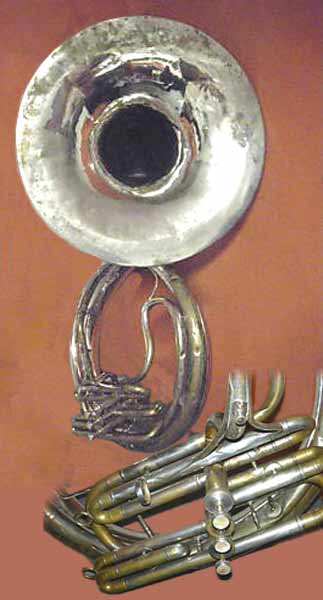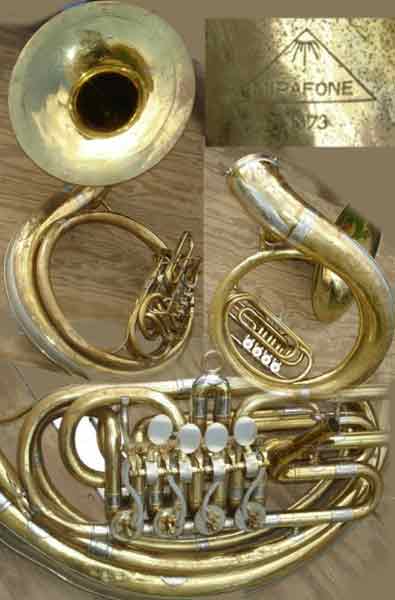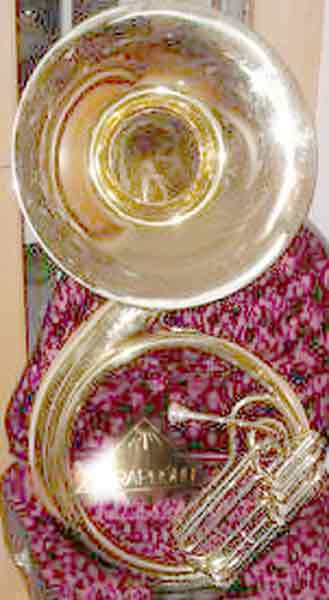| Description | Mirafone 1373
Pryorphone, quoting TubeNet: "That is a tuba built for the old California "Mirafone" distributors by someone else. It is substandard to Miraphone standards. The valve section does not look like Miraphone work, does it? No. That is the giveaway."
With the "f", the horn is American made, 1373 = pre-1960, and the and all the Miraphone instruments that I am familiar with DO NOT have clockspring valves. It makes perfect sense that perhaps a Czech manufacturer made the valves, which were then fitted to a Sousaphone body in California. Certainly, sousaphones were NOT required in Europe..
KimC: I must agree to Pryorphones arguments. While the sousaphone has begun to make its way in Europe now, it was rare in the pre 60s, and the Sousas that might have been found in Europe would have been imports from abroad.
That valve section looks oh-so-European, and exact similiar valve sections of the same kind can be found in a wide variety of tubas and helicons over here.
Of-two-bad-make-one-good repairs where the crafman does not look at maintainong the instrument in its original appearence, but the main thing is to get a playable instrument have been common ever since...
Repairmen of today may have got more focus on maintaining prominent makers instruments as original as possible, but in an orchestra sort of playable instruments this question may still not be asked.
Collectors would not do such things, but things look different out in the orchestras.
20 years ago most repairmen I knew gave heck in manufacturers, and brands, and just did what they could to get something playable out of it.
The results may be very original and profressional looking, a good craftsman could do such a repair (with proper parts available) so that it looks as if it never looked different.
It is my guess that this explains why tha tsousa looks like it does, of course things would look different if it proves that there are more instruments of the same kind around out there.
|


